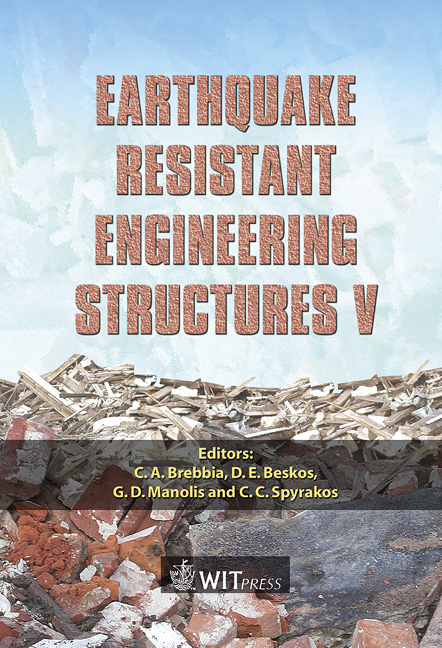Simplified Non-linear Time-history Analysis Based On The Theory Of Plasticity
Price
Free (open access)
Transaction
Volume
81
Pages
11
Published
2005
Size
1,645 kb
Paper DOI
10.2495/ERES050361
Copyright
WIT Press
Author(s)
J. L. Domingues Costa, R. Bento, V. Levtchitch & M. P. Nielsen
Abstract
This paper aims at giving a contribution to the problem of developing simplified non-linear time-history (NLTH) analysis of structures for which dynamical response is mainly governed by plastic deformations so as to be able to provide designers with sufficiently accurate results. The method to be presented is based on the Theory of Plasticity. Firstly, the formulation and the computational procedure to perform time-history analysis of a rigid-plastic single degree of freedom (SDOF) system are presented. The necessary conditions for the method to incorporate pinching as well as strength degradation are outlined. The procedure is applied to a typical SDOF system and results are compared with NLTH analysis commonly used for design purposes. Secondly, by means of the Virtual Work Principle, the definition of the equation of motion of a desired collapse mechanism of a multi degree of freedom (MDOF) system is presented. This equation is of the same type as in the SDOF case, and therefore the procedure presented in the first part of the paper may be used. The method is applied to a 4-story reinforced concrete frame structure. Results are compared to those derived by a conventional NLTH analysis and found to be encouraging. Keywords: non-linear time-history analysis, theory of plasticity, rigid-plastic material, collapse mechanism, virtual work principle. 1 Introduction It is well known that the most powerful and rational technique to assess the dynamical response of a structure subjected to an earthquake is a NLTH analysis.
Keywords
non-linear time-history analysis, theory of plasticity, rigid-plastic material, collapse mechanism, virtual work principle.





